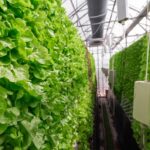As global demand for food safety and transparency continues to rise, blockchain technology is becoming a game-changer in the agricultural export industry. From farm to fork, blockchain provides an unalterable digital record of every stage in the supply chain, enabling producers, exporters, and consumers to verify the origin, handling, and quality of agricultural products with ease and accuracy.
In agricultural exports, traceability is no longer a luxury — it’s a necessity. Countries and trade partners are tightening regulations, requiring detailed documentation on where products come from, how they were grown, and how they were processed. Blockchain offers a secure, decentralized way to capture and share this data in real time. Every transaction or event — from harvesting and packaging to storage and transportation — is recorded in a transparent ledger that cannot be tampered with. This builds trust across the supply chain and ensures that compliance standards are met at every step.
For producers, blockchain simplifies recordkeeping while improving access to premium export markets. Smallholder farmers and cooperatives can log their agricultural practices, certifications, and quality tests into a blockchain system using mobile apps or smart devices. These digital records give exporters and regulators instant access to reliable information, which speeds up customs clearance, reduces paperwork, and minimizes the risk of shipment rejection due to incomplete or questionable documentation.
Consumers and retailers also benefit from blockchain traceability. With a quick scan of a QR code on the packaging, buyers can view the product’s entire journey — including the farm of origin, the type of fertilizer used, the date of harvest, and the conditions during transport. This level of transparency adds value to the product and builds confidence, especially in markets where food fraud or contamination scandals have eroded trust.
Blockchain also enhances accountability by identifying bottlenecks, delays, or inconsistencies in the export chain. If an issue arises — such as pesticide residue or spoilage — the source can be quickly traced, and corrective action can be taken with minimal disruption. This not only protects public health but also safeguards the reputation of producers and exporters.
Moreover, blockchain can be integrated with other technologies like IoT sensors and satellite imaging to verify data authenticity. For instance, temperature sensors in shipping containers can automatically upload real-time data to the blockchain, ensuring that perishable goods are transported within the correct conditions. This level of monitoring adds a new layer of quality assurance that traditional systems cannot match.
Despite the clear benefits, adoption of blockchain in agriculture still faces challenges. These include high initial costs, lack of digital infrastructure in rural areas, and the need for training and collaboration among stakeholders. However, pilot projects around the world are showing promising results, and governments are beginning to support blockchain initiatives through funding, policy incentives, and partnerships.
In the coming years, blockchain is expected to become a standard tool for agricultural exports, offering a powerful solution to traceability, compliance, and consumer confidence. For producers and exporters aiming to stay competitive in the global market, embracing this technology may no longer be optional — it could be the key to long-term growth and sustainability.
Join 'Farmers Mag' WhatsApp Channel
Get the latest Farming news and tips delivered straight to your WhatsApp
CLICK HERE TO JOIN






